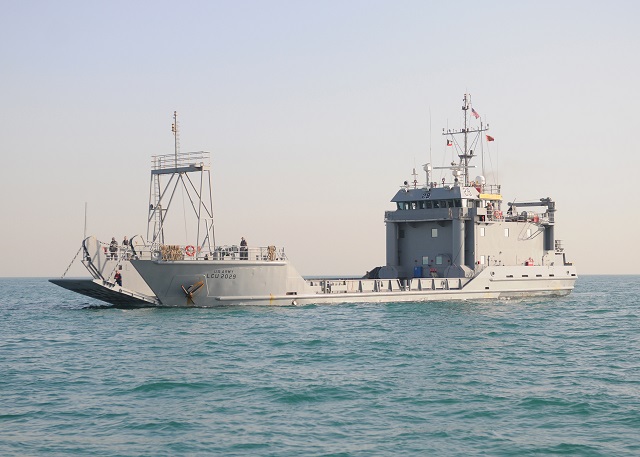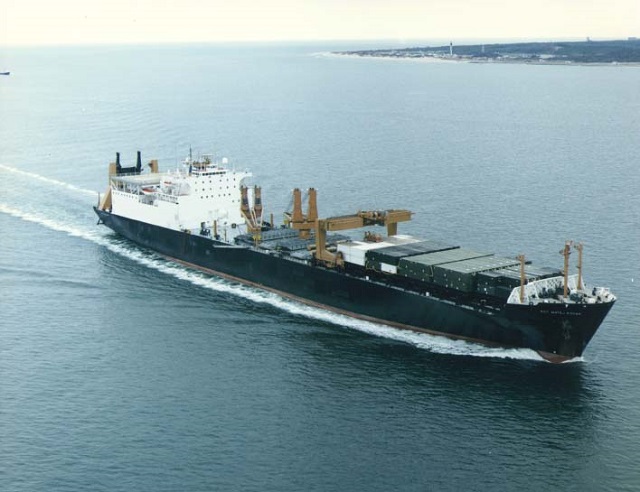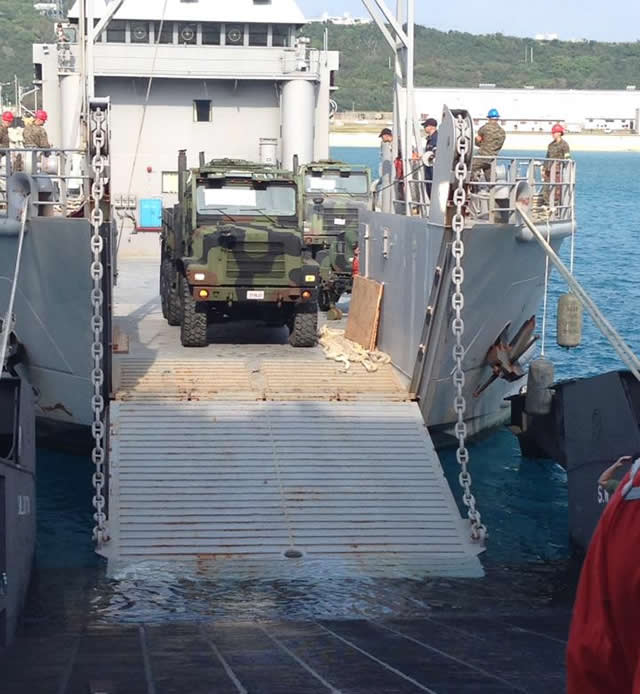 A U.S. Army Runnymede-class large landing craft (USAV Molino Del Rey
LCU 2029) (U.S. Navy photo by Mass Communication Specialist 3rd Class
Kristin L. Grover/Released)
A U.S. Army Runnymede-class large landing craft (USAV Molino Del Rey
LCU 2029) (U.S. Navy photo by Mass Communication Specialist 3rd Class
Kristin L. Grover/Released) |
|||
"At
times, the vessel's ramp was submerged in more than three-feet of water,
making it difficult to drive vehicles from the concrete loading ramp,"
said Chief Warrant Officer Bobby Irvin, USAV Port Hudson vessel master.
"After loading the USNS Kocak's stern ramp, we moved the vessels
side-by-side and transferred cargo using cranes. Overall, the USAV Port
Hudson's mission was a success due to the efforts of all services involved;
Army, Navy, Marine Corps and Military Sealift Command." In addition, the newly proven ramp-to-ramp loading method on larger class vessels will enhance contingency sealift capabilities in the far east and greatly reduce transportation costs for Exercises Cobra Gold in Thailand and Balikitan in the Philippines. This mission, along with many others, increases the feasibility of Army Watercraft Systems, or AWS, throughout the Pacific area of operation. "This was a great opportunity for the 14 Army crew members to become familiar with joint cargo operations in less than favorable conditions," Irvin said. "Not only did we have to adjust protocol to successfully transfer cargo using the stern ramp of the USNS Kocak, we also had to adapt to more than seven-foot tidal change on a sloping ramp to load equipment." The capabilities used during PULSE-W contribute to the joint training environment necessary in the Pacific region by enabling interoperability, enhancing military-to-military relations and elevating combined combat capabilities. By Chip Steitz, 10th Regional Support Group, Public Affairs Office |
|||
 An undated file photo of the Military Sealift Command prepositioning vessel
USNS Sgt. Matej Kocak (T-AK 3005). The ship ran aground off the east Coast
of Okinawa, Japan Thursday, Jan. 22, 2015 at approximately 11:30 a.m.
The vessel is located approximately six nautical miles of the coast off
Uruma, Okinawa, Japan. (U.S. Navy photo/Released)
An undated file photo of the Military Sealift Command prepositioning vessel
USNS Sgt. Matej Kocak (T-AK 3005). The ship ran aground off the east Coast
of Okinawa, Japan Thursday, Jan. 22, 2015 at approximately 11:30 a.m.
The vessel is located approximately six nautical miles of the coast off
Uruma, Okinawa, Japan. (U.S. Navy photo/Released) |
|||
US Army Tests New Capabilities Between Landing Craft Utility & Military Sealift Command Vessel
- Posted On











